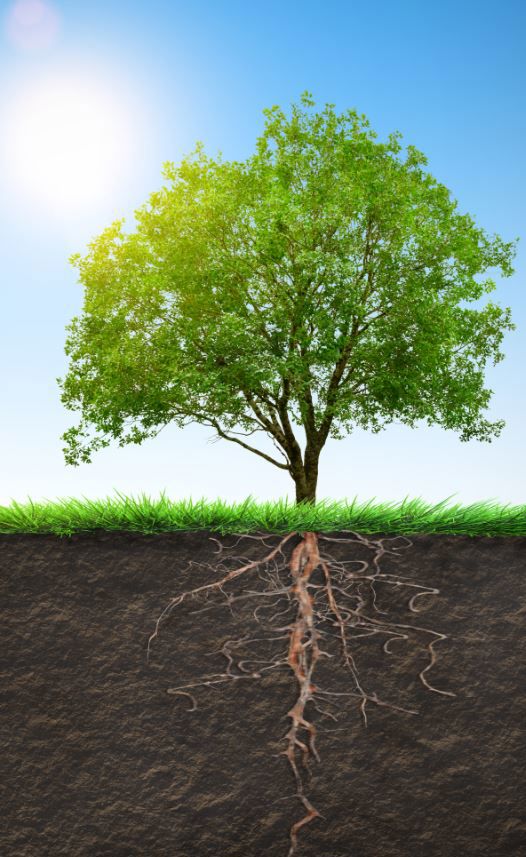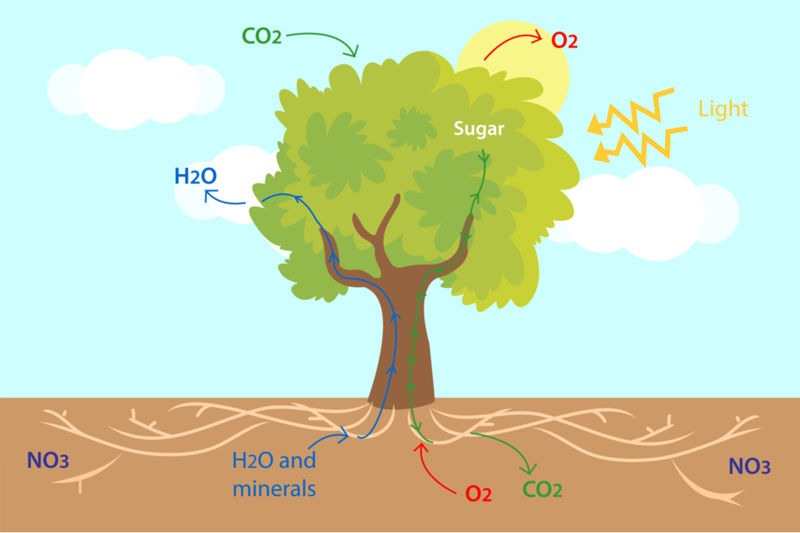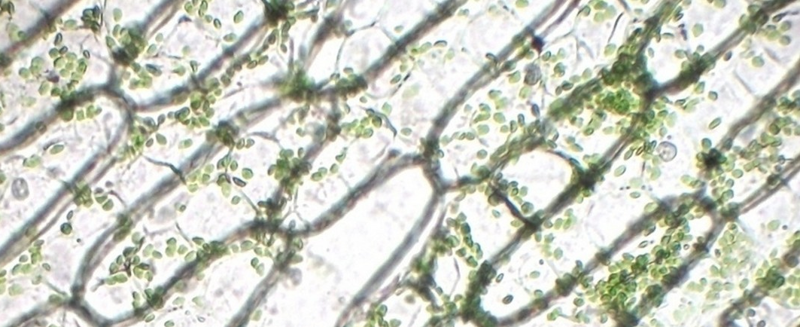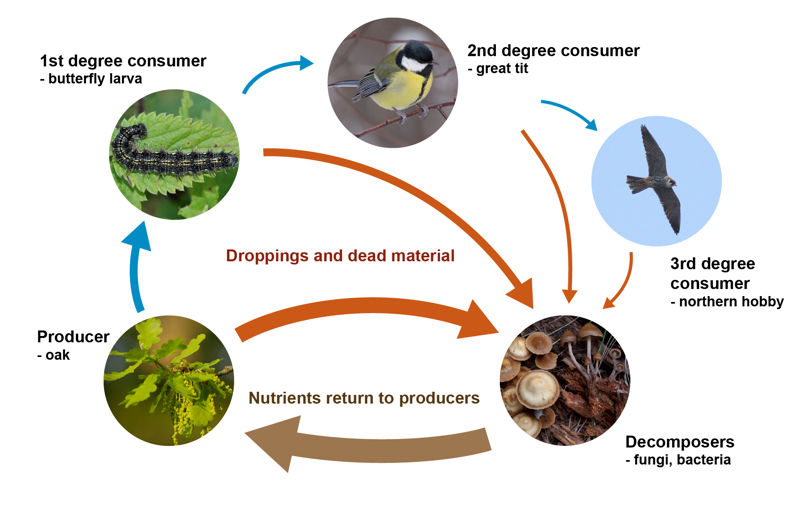Tree structure

The main parts of a tree are the roots, the trunk and the leaves.
The tree attaches itself into the ground with its strong roots. They can reach several metres down into the ground. Horizontally, the roots can stretch over tens of metres away from the tree's trunk. By doing so, the branching roots create a vast underground network.
The tree uses its roots to collect water. The tree also receives nutrients that have dissolved into the water. The most important nutrients for trees are nitrogen, phosphorus and potassium. Plants need these nutrients to grow and thrive.
The trunk of the tree reaches up towards the sky. By growing its trunk, the tree makes sure that its leaves have enough access to sunlight. The trunk is made of a durable material. The trunks of some trees can grow over 100 metres tall!
Narrow tubes run inside the tree's trunk, connecting its leaves and its roots. Water and nutrients travel through these tubes into the leaves of the tree.
The route of water in a tree is therefore: roots → trunk → leaves.
The leaves of the tree produce all the energy that it needs. They do this in a process known as photosynthesis.
Photosynthesis
Photosynthesis takes place in the plant's leaves.

The chemical formula of photosynthesis is:
6 CO2 + 6 H2O + sunlight ➞ C6H12O6 + 6 O2
carbon dioxide + water + sunlight ➞ sugar + oxygen
The cells of tree leaves contain a large number of green chloroplasts. These chloroplasts receive carbon dioxide from the air and water collected by the roots from the ground.
With the help of energy from sunlight, the plant uses carbon dioxide and water to produce sugar. This chemical reaction is known as photosynthesis.
In photosynthesis, the energy contained in sunlight is transformed into sugar. The plant uses sugar as its energy source. Plants need energy to complete many important tasks, such as growth and reproduction.
At the same time as the plant produces sugar, the reaction also releases oxygen into the air. This makes photosynthesis an important process for all living organisms.
When we eat, we gain energy from the sugar that plants have created during photosynthesis. At the same time, we breathe in oxygen that has been created in the same process.

- gathers sunlight
- gathers carbon dioxide from the air
- gathers nutrients from the soil
- gathers water from the soil
- photosynthesis
- transports water and nutrients
Food chains
Because plants produce all the sugar and oxygen used by animals, they are considered the producers of the ecosystem. All life on Earth is made possible by the work done by producers.
Animals, on the other hand, are consumers. This means that they have to eat other organisms, such as plants, to gain energy.
Together, producers and consumers form food chains and food webs.

When predators and other organisms die, decomposers arrive at the scene. These decomposers, such as fungi and insects, gain their energy from breaking down the material contained in dead organisms. At the same time, they release the nutrients contained in these organisms back into the ground, where they can be collected by plants.
Test your knowledge
a) Trees are plants.
- Correct
- Incorrect
b) Trees use their leaves to collect water.
- Correct
- Incorrect
c) Sugar is produced in photosynthesis.
- Correct
- Incorrect
d) Oxygen is produced in photosynthesis.
- Correct
- Incorrect
e) Plants need sugar to grow fruit.
- Correct
- Incorrect
- larva
- swallow
- pine
- rabbit
- snail
- tiger
- spider
- grass
- palm
Terminology
Trees are producers
Term | Explanation |
photosynthesis | An important chemical reaction that takes places in the chloroplast of plant leaves: carbon dioxide + water + sunlight ➞ sugar + oxygen. |
producer | A plant that produces sugar and oxygen during photosynthesis. |
food web | The combination of all the food chains (producer → herbivore → predator) in a specific ecosystem (such as a forest). |
Summary
- Green plants are producers.
- Producers are able to create their own energy with the help of a chemical process called photosynthesis.
- The formula of photosynthesis is: carbon dioxide + water → sugar + oxygen. The reaction also requires light energy from the Sun.
- The food chain describes how energy moves between different living organisms: producer → herbivore → carnivore.
